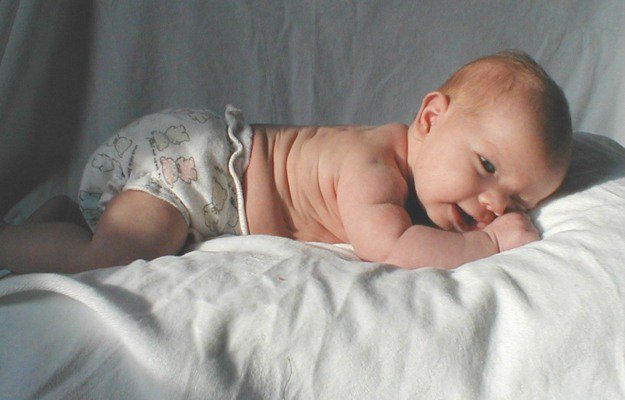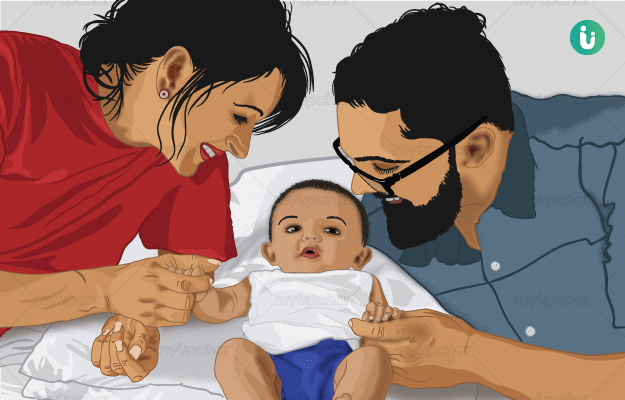A new mom has many childcare duties to attend to, but taking care of your infant’s umbilical stump should be a priority. During the gestation period, the umbilical cord connects you to your baby. While in the uterus, the baby gets all the necessary nutrients for his growth and survival through the umbilical cord. The doctor cuts off this umbilical cord right after the birth of your baby, but neither you nor your baby will feel any kind of pain as the umbilical cord does not have any nerve endings. Doctors put a plastic clamp or tie on the cord and then cut it, leaving the infant with a little stump, which is usually 2 cm to 3 cm long. Caring for this stump until it falls off naturally is one of your key responsibilities. Here are a few things you might like to know about caring for your baby’s umbilical cord.
How long will my baby have the umbilical stump for?
The umbilical stump takes 5 to 15 days to dry and fall off naturally. As it dries, the stump will shrink and change in colour from yellowish-green to brown or black. The dried stump will fall off on its own, and when it does, you can take off the clamp if you wish to.
You should not try to pull on it or try to "hurry up" the natural falling off of the umbilical stump in any way as this can lead to bleeding and cause infections.
How often should I clean the umbilical stump?
While you don’t need to go out of your way to care for the umbilical stump, you will need to keep it clean, dry and safe so that it does not cause any infections. Make sure you wash your hands before you change your baby’s nappy or give him a sponge bath.
Previously, paediatricians used to recommend alcohol swabs and antiseptics to keep the umbilical stump clean. But this practice is no longer advised as it kills the bacteria which helps the drying of the stump and can even cause irritation in some cases.
Try giving a sponge bath or topping and tailing to keep the baby clean. You can bathe him too, but try to keep the stump dry. A wet stump will take longer to dry and fall off, so make sure it stays as dry as much as possible.
Dress your baby in loose clothes to allow air to get to the stump. Don’t cover the stump with the top of his diaper, and if the diaper top does cover or touch the stump, then fold it downwards to avoid scratches and moisture from the diaper. Change wet and dirty diapers on time so that they don’t leak up towards the navel.
If your baby is premature or spends time in special care, the advice is still to keep the stump clean and dry. Follow the advice of the doctor and the neonatal staff about how to take the best care of your baby, since your premature baby may not be able to have a bath for a while.
What does the belly button look like when the umbilical stump falls off?
You will see a small wound on the belly button when the umbilical stump falls off. It will take 7-10 days for this wound to heal. Once this happens, you should be able to see a perfectly formed belly button. In the meantime, don’t worry if you observe a little bleeding or a bloodstain on the diaper. While a little bleeding is normal after the stump falls off, you must call the doctor if the bleeding occurs continuously.
What is an umbilical granuloma?
If you notice a soft pink or red lump that leaks clear or yellow fluid, or feels damp, then your baby may have an umbilical granuloma. A granuloma is an overgrowth of scar tissue. Don’t panic, but do consult your doctor as soon as possible because an umbilical granuloma is simple to treat.
What to do after my baby’s umbilical stump falls off?
You can begin to bathe your baby properly once the umbilical stump falls off. Clean the belly button area with baby soap and water when you bathe your baby. It is always good to wash and clean your hands before tending to your baby as it reduces the chances of infection.
While bathing your baby, clean the belly button after washing his face, eyes, hair, and upper body. Gently wipe in and around the belly button with a washcloth. Rinse the area, and then finish the bath. Gently pat dry the belly button and the area around it with a clean, dry towel. Make sure you dry the inside of the belly button thoroughly. You can also apply baby lotion around the belly area after the navel heals.
How do you know if the umbilical stump is infected?
It is normal to see a little blood near the stump during the healing process. But if you see the following symptoms, then you should take your baby to the doctor as these are the signs of umbilical infection:
- Pus discharge
- Pink, moist bump near the stump
- Red and swollen skin around the stump
- Smelly stump
- Fever
- A generally lethargic or unwell baby
Act promptly and take your baby to the doctor if any of these signs show up.




















